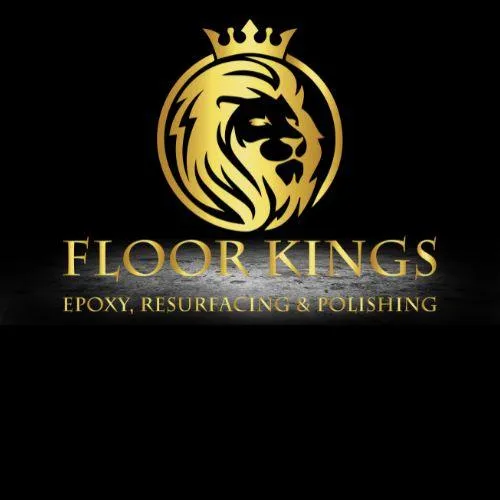
Epoxy Floor Chemistry 101: An Architect’s Guide to Resin-Hardener Reactions in Port St. Lucie
Epoxy flooring has made a notable shift from purely industrial usage to a refined, designer-friendly system frequently employed in modern architectural projects. In a place like Port St. Lucie, where style must harmonize with warmth and humidity, architects are drawn to epoxy flooring for its blend of durability, chemical resistance, and adaptable finish options. The undercurrent of epoxy flooring success lies in the carefully balanced resin-hardener reaction—a stoichiometric and chemical dance that transforms liquid components into a robust, thermoset polymer.
This article dives into the epoxy flooring chemistry that architects often want to understand deeply. We’ll examine the specifics of resin-hardener stoichiometry, how different curing agents influence the final epoxy flooring attributes, and the ways environmental factors in Port St. Lucie can affect every stage of epoxy flooring installation and performance. By exploring these topics, architects can align the science behind epoxy flooring with design and scheduling parameters, ensuring the floors installed have both the visual impact and strength to endure in commercial, industrial, or even high-end residential spaces.
Table of Contents
Foundations of Epoxy Flooring Chemistry
The Role of Stoichiometry in Epoxy Flooring
Hardener (Curing Agent) Types for Epoxy Flooring
Crosslink Density and Epoxy Flooring Strength
Environmental Factors: Port St. Lucie’s Influence on Epoxy Flooring
Pot Life, Cure Dynamics, and Epoxy Flooring Timelines
Additives That Enhance Epoxy Flooring Performance
Substrate Preparation and Adhesion Chemistry
Real-World Epoxy Flooring Applications in Port St. Lucie
Conclusion: Aligning Chemistry with Architectural Goals
1. Foundations of Epoxy Flooring Chemistry
Epoxy flooring systems rest on the concept of resin molecules bearing epoxide rings that react with specific curing agents. These epoxide (oxirane) groups open during contact with amines or other reactive functionalities, leading to the three-dimensional polymer network architects refer to as epoxy flooring. Unlike simple coatings that can be re-melted, epoxy flooring forms a permanent, irreversible thermoset structure. This characteristic underlies its compressive strength, abrasion resistance, and near-zero shrinkage, qualities that architects appreciate for broad-scope projects requiring both performance and design flexibility.
Because epoxy flooring is a thermoset system, once the polymerization reaction finishes, it cannot be undone or softened by heat. That’s an essential difference between epoxy flooring and lesser thermoplastic coatings. The resulting floor can resist mechanical stress, chemical spills, and repeated cleaning—key factors in large commercial or industrial venues in Port St. Lucie.
2. The Role of Stoichiometry in Epoxy Flooring
When specifying epoxy flooring systems, architects often see strict mix ratios for resin and hardener. This is not simply a practical guideline but a reflection of stoichiometry. In epoxy flooring, stoichiometry ensures that the epoxy groups in the resin match proportionally with reactive sites in the hardener. A mismatch leads to issues such as soft or tacky surfaces if there’s excess resin, or excessive brittleness if there’s a surplus of hardener.
In a large commercial environment where epoxy flooring might span tens of thousands of square feet, consistent ratio adherence is essential. If one batch differs in ratio from the next, noticeable mechanical and aesthetic inconsistencies can arise. By emphasizing correct stoichiometry in project specifications, architects prevent application crews from cutting corners, securing an epoxy flooring result that remains uniformly robust and visually consistent.
3. Hardener (Curing Agent) Types for Epoxy Flooring
Epoxy flooring performance is highly dependent on the chosen curing agent chemistry. Although resin typically provides the epoxide groups, it’s the hardener that dictates many final properties. Common categories include:
Aliphatic Amines: Often used in epoxy flooring requiring strong mechanical strength and a relatively quick cure. These are popular in standard commercial settings but can be more sensitive to humidity.
Cycloaliphatic Amines: Improved UV resistance, making certain epoxy flooring solutions suitable for partial outdoor or sunlit indoor areas.
Polyamides: Provide a more flexible polymer network, which can be beneficial for epoxy flooring subject to repeated minor substrate movements or temperature changes.
Modified Amine Adducts: Tailored systems that extend pot life or reduce odor, potentially offering better tolerance for damp substrates—useful in humid climates like Port St. Lucie.
Each curing agent modifies the internal crosslink density of epoxy flooring. Architects can select one that suits the chemical exposure, mechanical stresses, or aesthetic demands of the project. For instance, an amine adduct might serve well in floors that require extended working time or less odor intrusion during occupancy.
4. Crosslink Density and Epoxy Flooring Strength
An epoxy flooring system’s crosslink density—the extent of three-dimensional bonding—strongly influences floor toughness, chemical resistance, and temperature resilience. Higher crosslink densities typically yield more robust, rigid floors with superior chemical stability. Yet, overdoing it can create a system that lacks flexibility, potentially cracking when the substrate flexes.
For epoxy flooring in spaces where forklift traffic or heavy equipment is common, a higher crosslink density is often desirable. In other scenarios—such as floors bridging small expansion joints or experiencing thermal swings—architects might specify an epoxy flooring formulation that balances rigidity and slight elasticity. Understanding crosslink density allows for a data-driven approach to epoxy flooring specification, ensuring the final product aligns with occupant loads and building design objectives.
5. Environmental Factors: Port St. Lucie’s Influence on Epoxy Flooring
While epoxy flooring offers general robustness, it remains sensitive to temperature and moisture levels during application. Port St. Lucie’s warm, sometimes humid climate can shorten pot life, accelerate cure rates, or create surface blush from excess moisture. Architects should plan around these conditions, advising that crews may need to work at cooler times of the day or implement dehumidification to maintain ideal installation parameters.
In newly constructed or renovated commercial buildings, controlling sub-slab vapor drive is also important. Excess moisture rising through the slab can disrupt epoxy flooring adhesion. Where the environment cannot be controlled, advanced resin-hardener chemistries or specialized primers might be specified to handle higher moisture conditions. This ensures that epoxy flooring does not suffer bond failures or cosmetic defects down the line.
6. Pot Life, Cure Dynamics, and Epoxy Flooring Timelines
“Pot life” denotes how long an epoxy flooring mix remains workable after combining resin and hardener. Once that window closes, the mixture thickens and starts to cure. High ambient temperatures shorten pot life, forcing quicker coverage of the floor, while cool conditions can extend pot life but prolong final curing. This interplay is critical in large commercial or industrial floors, where contractors must coordinate each batch of epoxy flooring to ensure seamless application without unintended cold joints or texture shifts.
Similarly, “gel time” marks the point where the epoxy flooring transitions from liquid to a gel, limiting the ability to rework the surface or broadcast aggregates. By referencing these timelines in project documents, architects help contractors align manpower and scheduling so that the epoxy flooring installation can finish within the allocated time. The result is a consistent, high-quality surface rather than a patchwork of mismatched sections.
7. Additives That Enhance Epoxy Flooring Performance
Epoxy flooring can incorporate various additives to meet specialized performance or aesthetic goals:
Fillers (Silica, Alumina): Improve abrasion resistance or compressive strength for industrial floors.
Decorative Elements (Colored Flakes, Metallic Pigments): Provide a distinct visual flair that resonates with brand identities or design themes.
Slip-Resistant Aggregates: Safeguard occupant safety in wet or high-traffic areas without sacrificing the core strength of epoxy flooring.
UV Inhibitors: Help preserve color stability if partial sunlight exposure is expected in a lobby or open-air context.
An architect might specify a slip-resistant, quartz-filled epoxy flooring for a restaurant kitchen floor that needs traction and chemical spill resistance, or request metallic pigments in a retail environment seeking a high-end glow. Regardless of the approach, each additive merges chemically with the base resin, forming a cohesive polymer matrix in the cured epoxy flooring layer.
8. Substrate Preparation and Adhesion Chemistry
Even the most advanced epoxy flooring formulations can fail if the substrate is not adequately prepped. Concrete surfaces should be meticulously cleaned, removing oils or old coatings that interfere with bonding. Mechanical profiling (such as shot blasting or diamond grinding) roughens the slab, granting epoxy flooring both chemical and mechanical grip. Any major cracks or spalls must be repaired to ensure the final surface remains monolithic.
This synergy between the slab and the epoxy flooring underscores why architectural specifications often detail the necessary surface profile standard, commonly referencing guidelines like CSP (Concrete Surface Profile) levels. Architects who highlight these standards help prevent subpar installations and ensure that the expertly mixed resin-hardener chemistry actually translates into real-world adhesion strength.
9. Balancing Aesthetics and Performance
Epoxy flooring is unique in offering performance qualities—high compressive strength, chemical resistance, stable thickness—and decorative latitude. Architects can specify tinted epoxies that match corporate color schemes, incorporate metallic swirls, or broadcast custom flakes to create eye-catching patterns. Underneath these cosmetic choices, the polymer chemistry continues to deliver mechanical durability.
In a climate like Port St. Lucie, architects may want to ensure that performance remains top priority while maintaining design synergy. The interaction between color, reflectivity, and various topcoats should be considered so that epoxy flooring seamlessly fits the building’s brand image or the occupant’s functional needs. Whether it’s a vibrant retail showroom or a more subdued institutional corridor, epoxy flooring can adapt—provided the chemistry and application processes remain consistent with project demands.
10. Conclusion: Aligning Chemistry with Architectural Goals
Epoxy flooring stands at the confluence of chemical rigor and architectural aspiration, embodying a solution that is both versatile and highly engineered. By grasping how resin-hardener stoichiometry, crosslink density, and environmental conditions shape the outcome, architects can skillfully specify epoxy flooring that endures traffic, resists chemicals, and offers the visual experience that modern or upscale environments crave.
Wherever large commercial expansions or specialized spaces arise in Port St. Lucie, well-chosen epoxy flooring becomes an asset, not just a protective layer on top of concrete. It is the backbone of a seamless, robust surface that meets occupant needs while reinforcing design cohesion. Through knowledge of the chemistry underlying epoxy flooring, architects bridge the gap between concept and execution, ensuring floors remain true to their initial vision.
Floor Kings
Port St. Lucie, FL
Phone: 772-370-7938
Email: [email protected]

